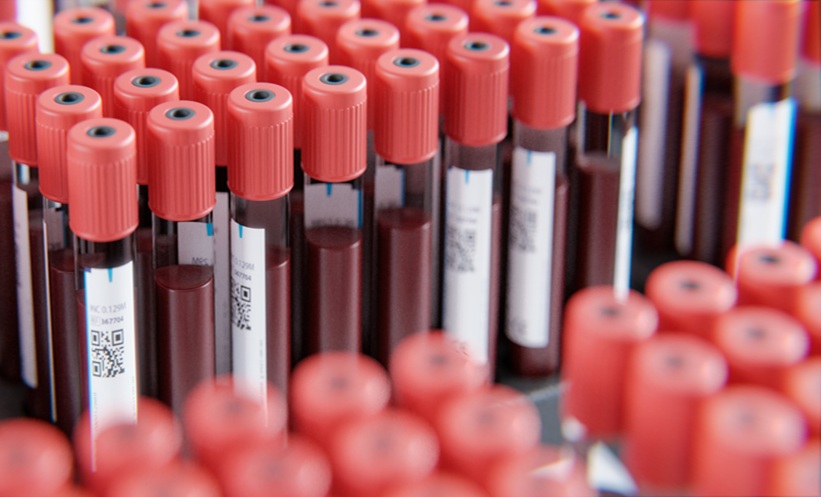Abstract
With the advancement of technology, flexible ureterorenoscopy (fURS) has gained popularity among urologists, and fURS is widely accepted as an alternative to extracorporeal shockwave lithotripsy and percutaneous nephrolithotomy. Recent technological and surgical innovations have promoted less invasive treatment options, such as fURS. The use of fibre optics in imaging, an increased deflection capability, and more appropriate dimensions of the device have increased the efficiency of fURS in stone disease treatment. However, there are limited data evaluating the efficacy of fURS in kidney stones >2 cm. Thus, in this review article, the authors assess the efficacy and complications of fURS for the treatment of kidney stones >2 cm.
INTRODUCTION
Urinary tract stone disease has a high rate of morbidity throughout the world and is one of the most common urological diseases, with an incidence rate of 10–15%.1 This has encouraged the development of treatment options that are minimally invasive and highly effective for the treatment of urolithiasis. With the urological field moving away from open surgery, recent technological and surgical innovations have promoted less invasive interventions, such as percutaneous nephrolithotomy (PNL), flexible ureterorenoscopy (fURS), and extracorporeal shock wave lithotripsy (ESWL).2 Following the first PNL applications of Fernström and Johnson in the 1970s,3 this procedure was used with instruments with smaller calibrations with the aim of reducing complication and morbidity rates without decreasing the stone-free rate.3-4 Thus with a smaller diameter entry tract, a reduction has been achieved in complications, such as renal parenchyma damage and blood loss.5-6
Technical advances in fURS since the 1980s, including the use of fibre optics in imaging and light transmission, the more appropriate dimensions of the device and the increased deflection capability have increased the efficiency of this technique for stone disease treatment.7 Furthermore, higher stone-free rates have been reported in comparison with ESWL and lower morbidity rates than PNL.8
The surgical method to be selected in kidney stone treatment depends primarily on stone size and localisation. In treatment algorithms and guidelines, while PNL is recommended as the first choice in kidney stones >2 cm, ESWL or endourology (fURS and PNL) are recommended for stones 1–2 cm in size, and ESWL or fURS for stones <1 cm. fURS is not recommended as the first treatment choice because of the low stone-free rate of stones >2 cm and the need for repeated fURS sessions.9 However, for patients with bleeding disorders, obesity, or a renal congenital anomaly, fURS is recommended as an alternative treatment option to PNL.10 Recently, fURS has been used by urologists for the treatment of stones >2 cm, as the rate and degree of complications are lower than in PNL and stone-free rates are comparable.11
The authors searched PubMed for the articles that investigated fURS in the treatment of renal stones >2 cm with the aim to evaluate the efficacy of fURS treatment for kidney stones >2 cm in size.
DISCUSSION
With the development of anterograde and retrograde techniques in nephrolithiasis treatment, the type of PNL treatment was defined according to the dimensions of the instruments used in the procedure: mini-PNL (14–20 Ch access diameter) was defined in 1998,4 micro-PNL (4.8 Ch) in 2011,12 and ultra-mini PNL (11–13 Ch) in 2013.13 Despite the high stone-free rates obtained, standard PNL is more invasive than other treatment methods.14 It has been reported in the literature that PNL should be the primary selected surgical technique for the treatment of large renal stones (>2 cm), with stone-free rates of 85–95% after a single session.15 However, this has also entailed serious complications, including bleeding requiring blood transfusion (11.2–17.5%), fever (21.0–32.1%), pneumothorax (0.0–4.0%), colon injury (<1.0%), and sepsis (0.25-1.5%).16 In addition, the anaesthesia risk is further increased during PNL because the patient is placed in a prone position and can experience contractions of extremities and a difficult airway.16 The risks caused by the prone position in obese patients or those with cardiopulmonary disease, including the negative effects on haemodynamics and the risk of muscle-nerve damage, have led to current application of PNL in the supine position.17,18 However, the prone position is more widely used because the urologist may not be familiar with the supine position and the prone position allows a wider access area.19
The complication rates and severity in fURS are less worrying for both the surgeon and the patient. Possible complications have been reported as haemorrhage, intrapelvic or subcapsular haematoma, ureteral perforation, avulsion, and mucosal injury. The postoperative complication rates in the literature have been reported as 3–4%, and the majority of these have been determined as Clavien Grade 1–2.20
Another complication of concern to urologists is the development of sepsis associated with increased pyelovenous and pyelolymphatic passage due to increased intrarenal pressure because of the irrigation fluid used during fURS. Intrarenal pressure is the most important factor for infectious complications.21 In the Clinical Research Office of the Endourological Society (CROES) ureteroscopy global study, postoperative infectious complications were reported in 2.97% of cases, of which 0.30% represented severe sepsis.22 In a randomised, prospective study by Güzelburç et al.,23 ethanol was added to the irrigation fluid in patients with renal stones >2 cm and fluid elimination was compared by measuring the ethanol level in the blood at certain intervals. The results showed no statistically significant difference between the different techniques in terms of irrigation fluid absorption (fURS: 20–573 mL; PNL: 13–364 mL). The prolonged operating time and increased amount of irrigation fluid used was not reported to have affected fluid absorption in the fURS group, but absorption was increased in the PNL group. Manual application of the water force in fURS is an important factor in increasing intrarenal pressure, while the access sheath is the most effective factor in maintaining low pressure. Intrarenal pressure can be kept low with the vacuum mechanism in mini-PNL but cannot be controlled in micro and ultra-mini-PNL.24
Mini-PNL and fURS are minimally invasive approaches that are effectively applied in the treatment of renal stones, but there is no definitive data in the literature showing that either of these techniques are a good alternative to standard PNL.25 Mini-PNL, which started to be used at the end of the 1990s, has not been determined to make a difference in stone-free rates compared to standard PNL, but a decrease in nephron loss and serious postoperative complication has been attributed to the technique.26, 27 When the dimension of the entry tract to the renal pelvis is reduced, the risk of bleeding and need for blood transfusion is reduced compared to standard PNL.28 However, when the literature is examined, studies demonstrate that fURS provides lower complications and higher efficacy than mini-PNL.29,30 Zeng et al.31 compared results in patients with renal stones >2 cm following mini-PNL or fURS, finding no difference between the two groups regarding the fall in haemoglobin level, the need for blood transfusion, complication rates, fever, and sepsis. However, the stone-free rate was found to be higher in the patients treated with mini-PNL in a single session compared to those treated with fURS (PNL: 71.70% versus fURS: 43.40%).
Generally, the results of PNL and fURS techniques evaluated in the literature have been associated with a greater preference for PNL if renal stones are >2 cm. In a multicentre study by Hyams et al.,32 fURS was performed for patients with renal stones 2–3 cm in size and stone-free rate was 66% when clinically insignificant residual fragment size was accepted as <2 mm. When clinically insignificant residual fragment size was accepted as <4 mm, the stone-free rate was 83%, 16% of the patients needed a second intervention, and one patient had ureteral perforation. Based on these data, it was therefore concluded that fURS was an effective method for the treatment of renal stones 2–3 cm in size which could be applied less invasively and with lower costs in selected patients.32
In a study from 2009, the outcomes of 22 patients, with a mean stone size of 3 cm who were treated with fURS were analysed. The average number of interventions per patient was reported as 1.82, the general stone-free rate as 90.9%, and mean operating time as 72 minutes (range: 28–138 minutes). Two interventions were required in 63% of patients, and three interventions in 5%. The authors reported that, with technological advances, fURS could be an alternative treatment for large renal stones.33 In a series of 167 patients with large stones ≥2 cm, Scotland et al.34 reported that the mean number of interventions per patient was 1.65, and the general stone-free rate was 59.4% after a single procedure, 90.2% when two procedures were completed, and 94% after three procedures. In the evaluation of subgroups, comparisons were made between those with stones of 2.0–2.9 cm and those with stones ≥3.0 cm. In the first group, there was a lower need for >1 intervention, and stone size was reported to be the most important predictor of a staged procedure and stone-free rates. However, a shorter length of stay in hospital and lower costs were reported as advantages of ureterorenoscopy. In another study that compared the costs of fURS and PNL applied to patients with renal stones of 2–3 cm, the mean number of interventions per patient was reported as 1.6 for PNL and 1.1 for fURS, and the costs were found to be lower for fURS.35
A study by Pan et al.36 compared the clinical outcome and the cost-effectiveness of between fURS and mini-PCNL for the management of single renal stone of 2–3 cm. Although the costs of hospitalisation and laboratory and radiology tests were initially reported to be lower in fURS, in respect of total medical costs with additional interventions, visits and general hospital stay, there was no significant difference between the groups, but the mean number of interventions (± standard error of the mean) was determined to be lower in PNL (1.03±0.20 versus 1.18±0.40 for fURS).
A meta-analysis examined 12 studies evaluating the results of 651 patients applied with fURS for renal stones >2 cm. The mean number of interventions was found to be 1.45, the stone-free rate 91.0% (range: 77.0–97.5%) and the complication rate was determined as 4.5%. In the subgroup analysis of patients with stones of 2–3 cm and >3 cm, the success rate was higher in the 2–3 cm stone size group compared to the >3 cm group (93.0% versus 76.8%); the major complication rate (0.0% versus 10.0%) and the number of interventions (1.39±0.18 versus 1.85±0.02) were determined to be lower in the 2–3 cm stone size group compared with the >3 cm group.37
In a series of 143 patients, Karakoç et al.38 compared the data of 86 PNL patients to 57 fURS patients. It was reported that the mean operating time was statistically significantly longer in fURS (PNL: 75.55±21.5 minutes versus fURS: 100.26±33.26 minutes; p<0.001). In the same study, all complications were seen more frequently in the PNL group: 2 patients required blood transfusion and 9 patients developed fever, whereas no patients required blood transfusion or developed fever in the fURS group. The mean length of hospital stay was shown to be statistically significantly shorter in the fURS group (fURS: 1.56±0.80 days versus PNL: 4.57±2.10 days; p<0.001). The stone-free rates were reported as 66.6% after the first session and 87.7% after the second in the fURS group and as 91.8% in a single session in the PNL group.
In a study that examined the data of 116 patients with a solitary kidney and renal stone of >2 cm, PNL was used in 60 patients and fURS in 56 patients.39 The mean operating time (±standard deviation) in the fURS group was found to be statistically significantly shorter than that of the PNL group (fURS: 99.46±31.08 minutes versus PNL: 78.95±29.81 minutes; p<0.001). The mean (± standard deviation) length of hospital stay was determined to be statistically significantly longer in the PNL group (PNL: 5.9±1.5 days versus fURS: 2.0±1.0 days; p<0.001). At the end of a 3-month follow-up period, the general stone-free rate was reported to be 83.3% for PNL and 82.1% for fURS, with no statistically significant difference determined. Although general complications and the fall in haemoglobin were determined to be significantly higher in the PNL group (p=0.04), there was no requirement for blood transfusion in either group and no significant increase in postoperative creatinine levels. The authors concluded that with low complications and high efficacy, fURS could be selected as an alternative to PNL in patients with a solitary kidney and stone of >2 cm.39
CONCLUSION
In patients with renal stones of >2 cm, the stone-free rates obtained with staged interventions are comparable with those of PNL. Taking complications and stone-free rates into consideration for patients who are planned to undergo surgery for large renal stones, it seems that fURS could be applied effectively in selected patients. However, prior to fURS, patients should be informed that >1 intervention may be necessary. Finally, fURS can be safely applied to patients who are at high risk for PNL.








